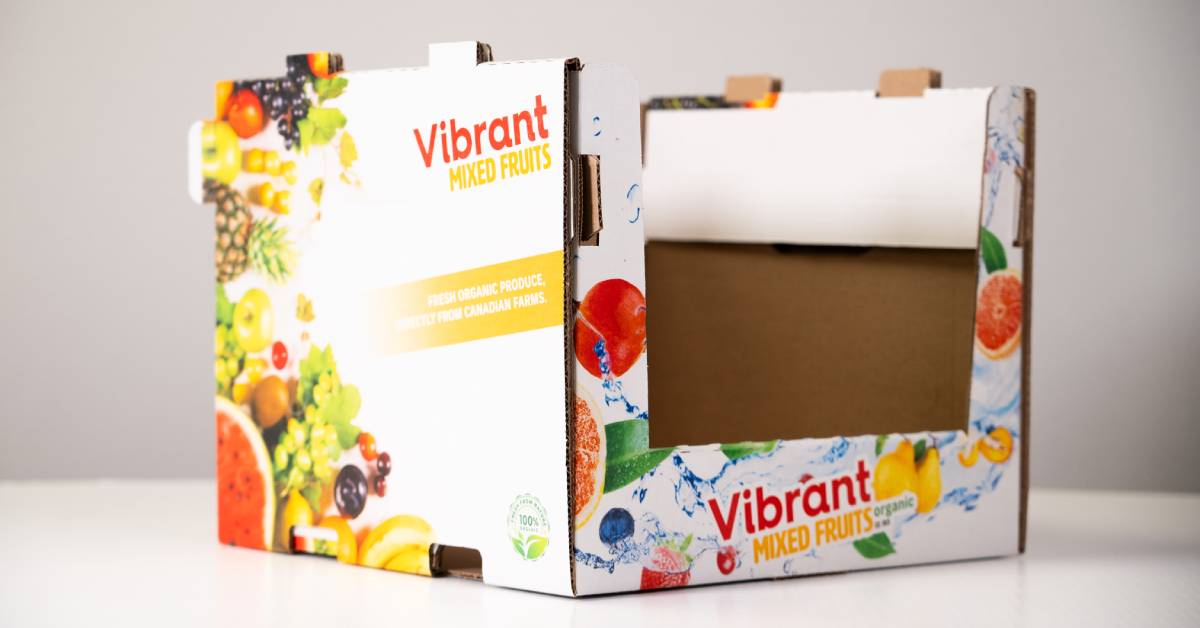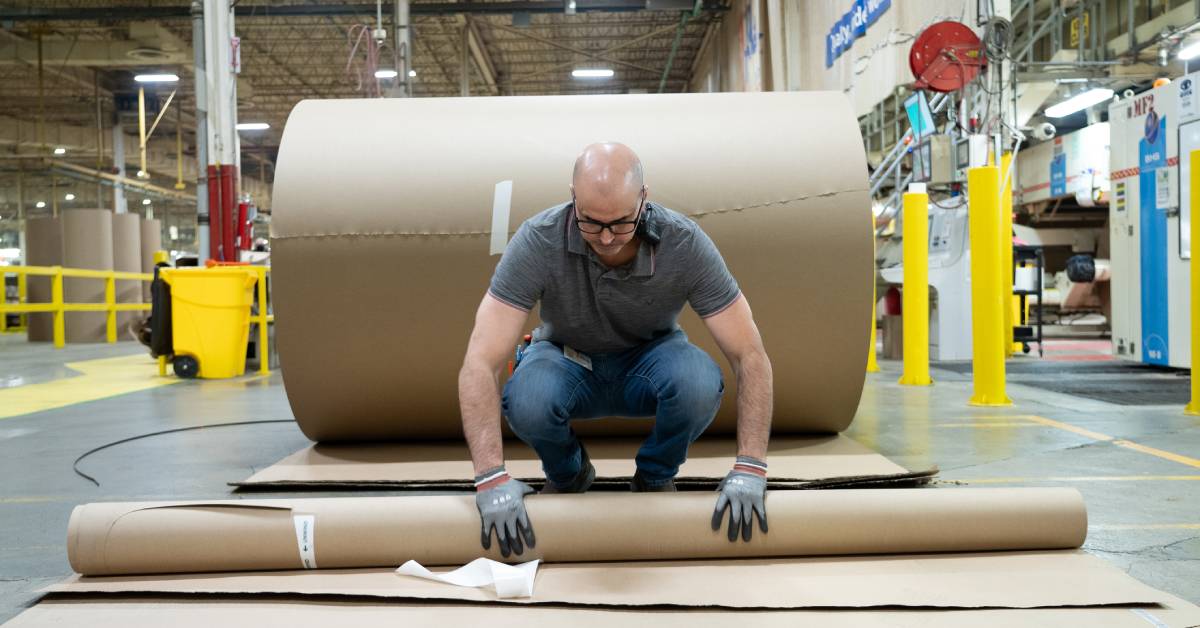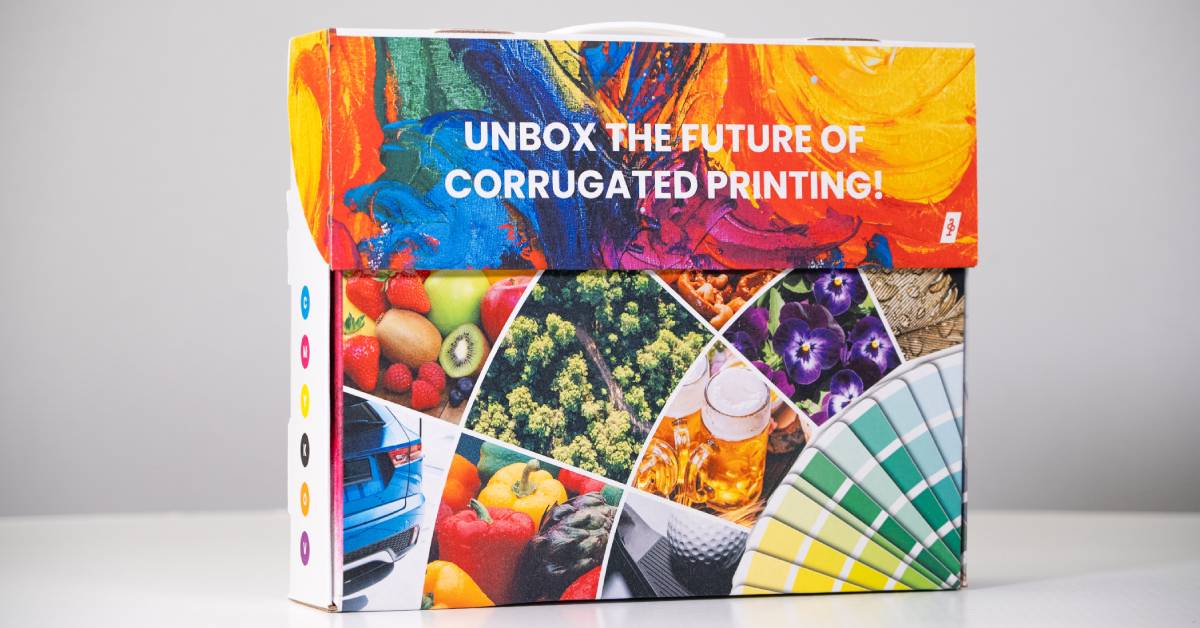Contact Us
or call us now 800.268.5620
or call us now 800.268.5620

The dynamic transformations the corrugated industry is experiencing are influenced by innovation and changing demands. Industries like e-commerce and corrugated packaging have been significantly impacted by these shifts. The entry of modern, competent technologies has made the creation of better designs and materials possible.
This National Box Month, it’s worth recognizing how corrugated and paper packaging has evolved to meet the moment. The newly emerging trends in this space are widely embraced by businesses due to their lightweight, durable, customizable, and eco-friendly characteristics—making them ideal for a wide range of applications across industries.
As businesses and consumers continue to prioritize practical and sustainable solutions, corrugated and paper packaging stands out. With improved structural integrity, refined designs, and digital printing capabilities, these solutions not only meet functional needs but also support broader environmental goals.
In this new year, the packaging industry must prepare to face certain challenges yet grow with opportunities.
Challenges:
Opportunities:
What are your expectations when entering a store or buying products online as a consumer? By now, we have all become accustomed to spotting eco-friendly packaging, be it the parcel in which your products are packed or the paper bag in which you buy groceries. As consumer preference for brands showing eco-conscious efforts rise, the brands are also giving their best efforts to meet their customer’s requirements.

Technologically advanced digital printing has already made statements in 2024. But this year, the focus has shifted to improving speed and affordability. More and more businesses are seeking printed packaging solutions. Local trend in digital printing demands the creation of innovative personalized designs, receipts, ready-to-display packaging and short-run productions. The advantage businesses get from printing is establishing brand identity and creating engaging customer experiences.
Consumers today prefer the convenience of ordering a product within few clicks and receiving them directly at their doorstep. The expectation is that the products must be delivered in an optimal state. E-commerce businesses are exploring options of water-resistant packaging, box designs that are easy-to-assemble, and safe and efficient logistics. As we look ahead to 2025, we observe a growing focus on ensuring product safety as well as providing a surreal unboxing experience.
Businesses are getting playful with what they can do with smart technology. QR codes, NFC tags, augmented reality experiences – we have all experienced them. However, more can be extracted from them to improve the interactive experience. Several studies reveal that consumers are willing to pay extra for the user experience than the actual cost of the product.
As global markets continue to expand, the risk of counterfeit products rises. 2025 brings more experimentation with holographic labels, tamper-evident seals, and product serialization. Brands facing challenges with fake products threatening their reputation can expect to breathe a sigh of relief.

The focus of companies is shifting to fiber-based alternatives, meeting sustainability goals and regulatory requirements. Corrugated and kraft paper packaging not only meet the minimalistic design preferences of consumers but also make the packaging more attractive. This trend is set to ignite innovation of molded fiber material, which is durable and biodegradable. For convenience, packaging companies are experimenting with making these new paper packaging options reusable.
As the market got impacted by the trade regulation, it’s clear that staying informed and proactive is vital for the packaging industry. Collaborating across the supply chain, investing in innovative materials, and focusing on compliance are all essential strategies for navigating these regulatory challenges while pursuing sustainable growth. Strategic geographical presence is important for evolving businesses.

The trends experienced by the packaging industry are dynamic. These transformations shape the way businesses meet customer expectations. While there are trends that vanish in no time, some, like sustainability, are here to stay. Understanding these transformations and refining old practices to create something new is the only way to succeed.
For packaging companies, the challenges today are far beyond simply ensuring product quality and meeting delivery timelines. They require experts who can provide current industry insights and adapt to their growing business needs.
Being a key player in the packaging industry for almost 80 years, Atlantic Packaging Group of Companies is constantly embracing the changes. Through the years, we have found our recognition as a packaging solutions provider advocating sustainability. With green initiative as our foundation, we have mastered the skill of adaptation and the excitement of exploring the unexplored.
Atlantic Packaging has worked with many brands to create unique packaging designs. This has only been possible because of the rich expertise our designers bring to the table.
Sustainability, to the packaging industry today is not a surpassing trend, it marks a lasting commitment, shaping the future. Whatever change may come in the future, they can innovated to meet new consumer demands. For instance, consumers in the present wants brands to listen. They feel valued when their preferences are considered. It shows the brand’s efforts meet their expectations.
Learn how we can help you create innovative packaging designs. Contact us today!
© 2025 Atlantic Packaging Products Ltd. All rights reserved.
Atlantic Packaging Products
We firmly believe that the internet should be available and accessible to anyone, and are committed to providing a website that is accessible to the widest possible audience, regardless of circumstance and ability.
To fulfill this, we aim to adhere as strictly as possible to the World Wide Web Consortium’s (W3C) Web Content Accessibility Guidelines 2.1 (WCAG 2.1) at the AA level. These guidelines explain how to make web content accessible to people with a wide array of disabilities. Complying with those guidelines helps us ensure that the website is accessible to all people: blind people, people with motor impairments, visual impairment, cognitive disabilities, and more.
This website utilizes various technologies that are meant to make it as accessible as possible at all times. We utilize an accessibility interface that allows persons with specific disabilities to adjust the website’s UI (user interface) and design it to their personal needs.
Additionally, the website utilizes an AI-based application that runs in the background and optimizes its accessibility level constantly. This application remediates the website’s HTML, adapts Its functionality and behavior for screen-readers used by the blind users, and for keyboard functions used by individuals with motor impairments.
If you’ve found a malfunction or have ideas for improvement, we’ll be happy to hear from you. You can reach out to the website’s operators by using the following email
Our website implements the ARIA attributes (Accessible Rich Internet Applications) technique, alongside various different behavioral changes, to ensure blind users visiting with screen-readers are able to read, comprehend, and enjoy the website’s functions. As soon as a user with a screen-reader enters your site, they immediately receive a prompt to enter the Screen-Reader Profile so they can browse and operate your site effectively. Here’s how our website covers some of the most important screen-reader requirements, alongside console screenshots of code examples:
Screen-reader optimization: we run a background process that learns the website’s components from top to bottom, to ensure ongoing compliance even when updating the website. In this process, we provide screen-readers with meaningful data using the ARIA set of attributes. For example, we provide accurate form labels; descriptions for actionable icons (social media icons, search icons, cart icons, etc.); validation guidance for form inputs; element roles such as buttons, menus, modal dialogues (popups), and others. Additionally, the background process scans all the website’s images and provides an accurate and meaningful image-object-recognition-based description as an ALT (alternate text) tag for images that are not described. It will also extract texts that are embedded within the image, using an OCR (optical character recognition) technology. To turn on screen-reader adjustments at any time, users need only to press the Alt+1 keyboard combination. Screen-reader users also get automatic announcements to turn the Screen-reader mode on as soon as they enter the website.
These adjustments are compatible with all popular screen readers, including JAWS and NVDA.
Keyboard navigation optimization: The background process also adjusts the website’s HTML, and adds various behaviors using JavaScript code to make the website operable by the keyboard. This includes the ability to navigate the website using the Tab and Shift+Tab keys, operate dropdowns with the arrow keys, close them with Esc, trigger buttons and links using the Enter key, navigate between radio and checkbox elements using the arrow keys, and fill them in with the Spacebar or Enter key.Additionally, keyboard users will find quick-navigation and content-skip menus, available at any time by clicking Alt+1, or as the first elements of the site while navigating with the keyboard. The background process also handles triggered popups by moving the keyboard focus towards them as soon as they appear, and not allow the focus drift outside it.
Users can also use shortcuts such as “M” (menus), “H” (headings), “F” (forms), “B” (buttons), and “G” (graphics) to jump to specific elements.
We aim to support the widest array of browsers and assistive technologies as possible, so our users can choose the best fitting tools for them, with as few limitations as possible. Therefore, we have worked very hard to be able to support all major systems that comprise over 95% of the user market share including Google Chrome, Mozilla Firefox, Apple Safari, Opera and Microsoft Edge, JAWS and NVDA (screen readers).
Despite our very best efforts to allow anybody to adjust the website to their needs. There may still be pages or sections that are not fully accessible, are in the process of becoming accessible, or are lacking an adequate technological solution to make them accessible. Still, we are continually improving our accessibility, adding, updating and improving its options and features, and developing and adopting new technologies. All this is meant to reach the optimal level of accessibility, following technological advancements. For any assistance, please reach out to
